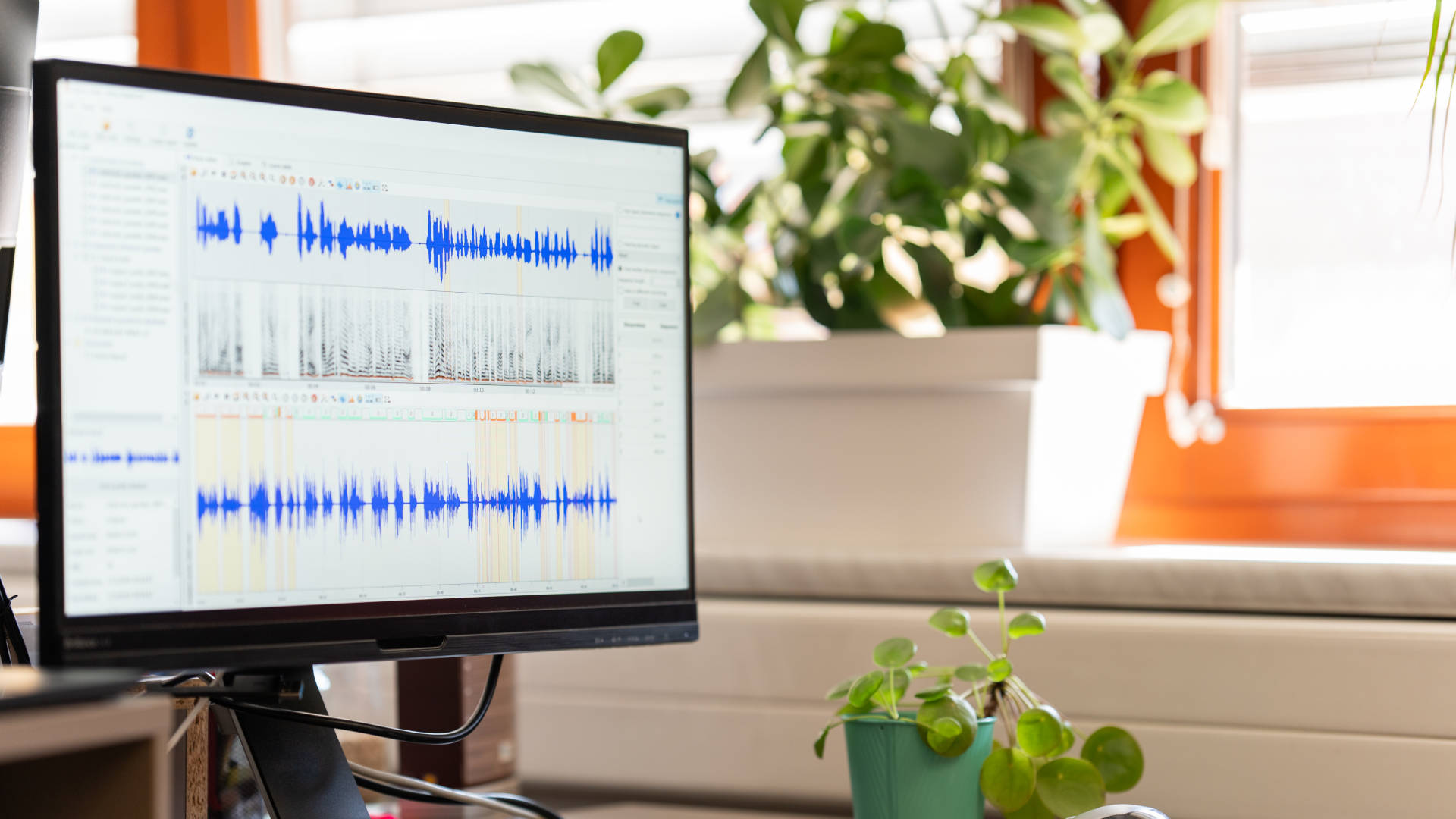How Frictionless Voice Authentication Changes the Customer Experience

July 23, 2021
By Pavel Jiřík in Blog
As people become more comfortable with biometric technology, voice biometric authentication is finding more applications across various industries such as healthcare, banking, and education. The voice biometrics market was expected to generate revenue of $8.5 billion in 2021 (source). What’s more, the industry is expected to reach a compound annual growth rate (CAGR) of 22.8% between 2021 and 2026.
What causes the popularity of this technology? There are many reasons for that. The main one is that voice is a natural way of communicating, used every day by billions of people worldwide. Practically everyone is accustomed to using their voice since early childhood and are unlikely to lose this skill during their life. This makes voice a very powerful tool that opens a new world of passwordless customer experience when applying it in biometrics.
What’s more, most of the world's population (62% to be exact) own simple mobile phones (not counting landlines) that can be used to run biometric voice analysis. Users don’t need additional devices to use this biometric authentication method. They only need a microphone to record and then identify a voice each time someone undergoes authentication. What makes this biometric method even more useful and accessible is the fact that it doesn’t require in-depth knowledge or technical resources to use it.
In 2017, 12.5% of all households in the US owned a smart speaker (source). Predictions indicate that this number will rise to 60% by 2022 and 75% by 2025. It’s also estimated that, in 2021, voice searches will be performed by 122.7 million users in the US alone. This data reflects the journey that the voice channel is on, from personalizing the experience to increasing user security, all driven by one essential element - biometrics.
Since voice is a natural human ability and creating a voiceprint is an easy process that doesn’t require unique skills, it may be presumed that implementing voice authentication processes can positively influence a customer’s experience and their satisfaction when interacting with a company. In this article, we want to analyze the impact frictionless voice authentication can have on the customer experience and how it makes users’ lives easier.
What Does a Modern Customer Expect?
To see if frictionless voice authentication changes the customer experience and, if so, to find out whether it’s a positive or a negative change, we first need to dive deep into customers' expectations in the current decade. Please note that these are just a few examples of what customers expect when it comes to products, services, and support.
Let’s start with the most important one: Salesforce reports that 66% of customers expect companies to understand their needs and expectations.
Below, we have curated a list of other common customer expectations and cited data to back up our claims.
Quickly! Fast!
What customers define as "fast" service has changed dramatically over the last few decades and in all areas. It doesn't just apply to receiving orders, website loading times, or provision of services, but really to every interaction a customer has with a company - including authentication processes.
- 90% of customers say that 10 minutes or less is an “immediate” response to a support question, and this is what they expect. (HubSpot)
- According to Google, 75% of people expect to receive immediate information when they connect with a company using a smartphone.
- A staggering 80% of customers point to “speed” as one of the essential elements of a positive customer experience. (PwC)
Self-Service
Customers are more willing than ever to perform different actions, look for information, and solve issues on their own. And this is not limited to the input of their name, address, and other contact information. Customers expect companies to enable them to do many things independently, without the assistance of company representatives. They also want to make decisions regarding the direction of the customer journey they can take. What’s more, all this should happen frictionlessly and in as few steps as possible.
- According to research by Steven Van Belleghem, 70% of customers expect businesses to provide a self-service option for accessing or using online services.
24/7, Year-Round Availability
Customers expect businesses to make their products or services reachable at all times. This includes customer service being available 24 hours a day, 7 days a week, 365 days a year. Google, for example, offers customer service in more than 42 languages. Its English service is available 24 hours a day, 5 days a week. Many companies already provide their services around the clock via chat and call centers, as companies are becoming internationalized and business is also conducted at night.
- More than 42% of customers appreciate 24/7, real-time availability. (CX Trends)
The Omnipresence of Offers and Services
Customers want to be offered multiple ways to buy products or services, and companies are reacting to this. So a product can be purchased both online and offline. But there is also an expectation that a product purchased online will be easily exchangeable at a nearby store. Multichannel shopping and omnichannel marketing are slowly becoming something that no company can afford not to offer. Customers demand seamless, cross-channel experiences.
- 33% of customers are most frustrated by being forced to repeat themselves to multiple service agents. (HubSpot)
- More than 70% of customers had to use multiple channels to start and complete a single process during one interaction with a company. (Salesforce)
Accuracy
Accuracy is vital to customers. In an age of "copy and paste", misspellings, vague statements, or imprecise services are no longer acceptable. The same applies to excuses for delayed orders or long waiting times to access an account due to an incorrect password. Comparability and the possibility of sharing public opinions on the Internet enables customers to pressure companies to strive for perfection in their offer of products or services. Businesses should know their customers and go all out to meet their expectations.
- Deloitte's study suggests that accuracy and quality of information are the most important elements of the customer experience for 82% of people
This is How Voice Authentication Changes the Customer Experience
Customers' expectations have changed drastically in the last 20 or even 5 years. Voice authentication can be one of the ways to keep up with this ever-changing area, improve the customer experience, and live up to or even exceed customers’ expectations.
Faster Customer Service
Customers expect fast service, fast answers, and also fast authentication processes. Companies leveraging voice biometrics can easily better the customer experience through frictionless voice authentication and a passwordless customer experience. Voice biometric engines can verify a customer in just 3 seconds with 90%+ accuracy and enable them to access services that they want to use securely.
Customer Self-Service
Authentication using voice happens automatically, without requiring the assistance of a company representative. This means that customers can authenticate themselves on their own without answering a number of questions or waiting on a call to give their data to an operator to proceed with the authentication process.
Constant Availability
The fact that voice authentication doesn’t require the presence of another person and it can happen via a phone call makes it highly accessible and available, no matter where the customer is located. Unlike many services, including different authentication methods, voice authentication doesn’t require access to the Internet or any special device to be used.
The Omnipresence of the Voice Authentication Process
Once a company collects and stores a voiceprint, it can then be used across its different departments. This means that if a company obtains the necessary approval, customers don’t have to go through the enrollment phase each time they want to start using another service. Instead, they can simply authenticate themselves using their voice.
Can you imagine anything more frustrating than repeating the same things each time you want to access a new department within the same company? Such a situation can negatively impact the customer experience.
Accuracy
Frictionless voice authentication brings accuracy to interactions between a customer and a company. If customers can authenticate themselves using voice then incidents like forgotten passwords, misspelled names, or numerous agents calling the same person won’t happen. Providing a passwordless customer experience will also shorten the distance between a customer and a business.
The application of voice technologies into authentication processes offers a flexible and cost-effective form of biometric authentication through a passwordless customer experience. And as you may see, businesses can use voice recognition to provide seamless experiences, enhance security, and offer customers a choice of how they want to be authenticated.
How Customers Use Voice Biometrics in Various Industries?
The fact that companies across various industries use voice authentication to confirm the identities of their customers can be seen as further proof of the positive impact that frictionless voice authentication has on the customer experience. If this was not the case, the adoption of voice biometric authentication methods across various industries wouldn’t be so common. Have a look at some use cases of voice-based operations in different economic sectors.
Voice Biometric Authentication in Banking
Customers can use voice authentication to access and use their accounts or safe deposit boxes in banks. Banks, in turn, can use voice biometrics to implement highly secure and advanced voice-based payment systems. According to a study by Accenture, the finance sector is the industry that bears the highest costs for cybercrime, at an average of $18.3 million per organization. Credit card issuers and banks use voice biometrics to identify fraudsters and authenticate callers to their support centers proactively in order to increase security.
Read more: Is a Fingerprint More Secure Than a Voiceprint?
Adoption of Voice Authentication in the Healthcare Industry
The global medical biometrics market is anticipated to reach $14.5 billion by 2025. In an industry for which data protection is vitally important, doctors can be verified by voice biometrics to dictate and record a patient's health status directly into the system and securely query their medical history. This can bring significant benefits to patients, who won’t need to share their records with multiple physicians.
Application of Voice Biometrics in Education
Educational institutions can use voice recognition to provide flexibility for visually impaired students, for example by helping them sit online exams through voice authentication.
Use of Voice Biometrics in Entertainment
Speech recognition can be used to change TV or radio channels, open and close screens, or play movies. It can also help personalize the customer experience. For example, services such as Netflix and Hulu can be customized to determine the user's age using voice biometrics to gain access to age-appropriate content.
Use of Voice Biometrics by Independent Software Vendors (ISVs)
For ISVs, voice authentication allows companies to apply similar login mechanisms to those based on an active directory in order to unify authentication processes across enterprise applications and strengthen compliance with accessibility standards.
The Advantage of Voice Biometrics: The Future of Authentication
As biometric technology grows in popularity, the advantages of voice recognition become more apparent as it paves the way to greater efficiency, improved customer experiences, and more robust security. For example, paying bills via voice recognition speeds up the process and eliminates manual entry of passwords or other information to create a passwordless customer experience with increased accuracy and consumer satisfaction.
A growing reliance on voice searches and organizational platforms that enable automating many processes through voice biometrics will significantly impact the future of e-commerce, banking, payments, and home devices, to name a few sectors. This allows businesses to leverage the trend to their advantage. Once a customer registers with a voice identification system, their voiceprint will be available across all of the company's support channels, thus optimizing the customer experience. And this is what customers expect from businesses - frictionless experiences.


